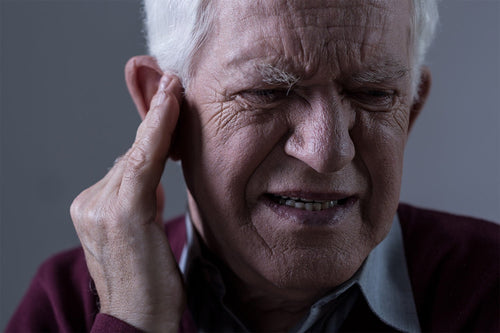Any injury to the head or face tends to get people worried as there are a number of delicate structures that allow you to sense the world around you, like the ears, eyes, brain, and nose. When it comes to getting a bruise, many people understand that they are temporary and go away with time, but what many people don’t know is the proper way to treat one that occurs on the ear.
Below is a closer look at ear injuries, what you need to do about them, and when you may need to seek care. An injured ear is typically not of much concern but could lead to some potentially undesirable complications.
Learn more about the steps you can take to minimize those long-term complications.
The Ear Anatomy

The ear can sustain an injury in many different ways. Unlike other parts of your body, the ears have the ability to sustain an injury without even sustaining a physical injury, as high enough sound levels can damage the ears.
Below is a closer look at the anatomy of the ear and a look at some of the potential injuries that can occur with each structure. While this information won’t allow you to diagnose yourself, it will give you a good idea of what you should look out for if you are experiencing some discomfort or pain in the ear.
Pinna
The outer structure of the ear is called the pinna. It is responsible for helping funnel sounds into the ear, providing your ears a better ability to localize sounds. The small ridges and shape of the ear can ever so slightly affect the sounds entering the ear. This can help to provide some contextual information to your brain of where a sound is coming from.
An injury to the pinna can occur in many different manners. The main types of injuries that are experienced by the ear include cuts, tears, and bruises. The outer ear is an interesting structure mainly due to its inner structure.
The pinna is a semi-rigid structure, thanks to the cartilage that is found within the ear. Cartilage is actually quite sensitive. So, when an injury is sustained to the pinna, it could cause a potential problem with the proper blood flow of this tissue.
Ear Canal
The next structure is the ear canal which is the small hole that leads from the outer ear to the eardrum. While there may not seem to be anything particularly exciting with this ear structure, it actually plays an important role in protecting your hearing.
The first function of the ear canal is that it allows the inner ear structures to be pushed farther back into the head while still having access to the external environment. Having them in a more internal position helps to keep them safe from things like foreign objects or physical injuries.
The second function of the ear canal is that it produces ear wax. Ear wax is a sticky secretion of the ear that is constantly being produced. Many people simply see ear wax as something you need to remove to ensure it doesn't get your earbuds or hearing aids dirty. Yet, the reality is that without this wax, your ears and ear canals may be more prone to injury.
Ear canal injuries tend not to be as common as outer ear injuries, but they can occur. Sticking items into your ear to try and clean them or even something getting stuck in the canal may be able to cause injury. While physical injury to the canal tends to be rare, there are other ear canal issues that could arise, such as impacted earwax and an ear infection.
Middle Ear
The middle ear consists of the eardrum, tympanic cavity, and middle ear bones. Once a sound has been funneled into the ears with the pinna and ear canal, it reaches the eardrum.
The eardrum is a very thin tissue, and it responds to the sound that enters the ear by vibrating. The vibrations of the eardrum are then transferred to a series of tiny bones in the middle ear, which conduct noise to the vibrations to the inner ear.
The middle ear is a structure that is fairly deep but can also be susceptible to injury. One of the most common issues when it comes to the middle ear is eardrum perforation. A perforated eardrum is essentially a tear of the eardrum. It can be caused by loud noise exposure, accidental cotton swab eardrum injury, and extreme pressure changes.
The eardrum isn’t the only middle ear structure that can sustain an injury. In certain instances, the bones of the middle ear can either become dislocated or even fractured. While uncommon, this injury can occur as a result of severe head trauma where a skull or jaw fracture occurs.
Inner Ear
The inner ear is where vibrations are converted into neural impulses. The inner ear is composed of a structure known as the cochlea. The cochlea is able to take incoming vibrations from the middle ear bones and convert them into a signal that is sent to the brain. This is accomplished through the specialized structure of the cochlea.
The cochlea is a hollow tube structure that is spiraled. In the tube, there are a number of sensory hairs that are each tuned to a specific tone of sound. When a vibration reaches the cochlea, it vibrates the cochlea at a specific frequency. Then, the corresponding hair to that frequency activates a neural impulse.
Injuries to the inner ear are not that uncommon and can come as a result of loud sound exposure, heredity causes, or it can even come as a result of getting older. Injuries that are sustained to the inner ear can cause sensorineural hearing loss or even tinnitus. Hearing aids may be recommended to those with an inner ear injury.
Bruised Ear, Why Worry?
A bruise now and again from physical activity is nothing to stress over. Those who frequent the gym or like to play sports may be more inclined to experience a bruised ear. Bruises are essentially a bleed that occurs under the skin.
When something hits your body and causes a bruise, the small capillaries in the area burst, leading to bleeding. The blood from the capillaries leaks into surrounding tissues which causes the signature color change of a bruise. Since there is no break in the skin, there is no risk of infection, and the body is typically able to heal all on its own.
While the body is generally able to heal bruises, bruises of the ear may require some level of knowledge to ensure it heals properly. Below is a closer look at why a bruised ear may be of concern and what you can do to help.
Cauliflower Ear
Many bruises are capable of healing all on their own, but bruises of the ear can cause problems if not monitored. The ear has a unique structure and is largely composed of cartilage which gives the ears their elasticity.
Cartilage requires a steady flow of blood, or it can die. When the ear becomes bruised, the blood supply becomes disturbed, and the cartilage tissue can be at risk of dying. When cartilage dies as a result of a bruised ear, it leads to a specific lumpy look. This is where the term cauliflower ear comes from.
Cauliflower ear can happen to anyone, but it is quite prevalent in high contact sports like wrestling or boxing, where the ear is susceptible to getting hit. There are some precautions now utilized, including ear guards, but bruises can still occur.
What To Do With a Bruised Ear
While a bruised ear has the potential to lead to cauliflower ear, it doesn’t have to. One of the major components to the development of cauliflower ear is the pooling of blood and fluid following a bruise. The best method to prevent cauliflower ear is to manage these.
The first step you can utilize is a compress. A compress is essentially a way of providing external pressure to ensure that builds cannot pool in a given area. The next step is to apply something cold to help reduce inflammation. Taking these steps after getting a bruised ear can help to reduce the likelihood of cauliflower ear.
Tending To Ear Injuries

A bruised ear has the potential to cause cauliflower ear, but with proper care, you can greatly reduce the likelihood of developing it. The ear is composed of four distinct parts, and an injury can be sustained to any of these critical parts. Protecting your ears and getting prompt care when things go wrong is the best way to ensure they stay healthy.
Sources
Ear Injuries and Trauma | Cleveland Clinic
Cauliflower Ear - StatPearls | NCBI Bookshelf













